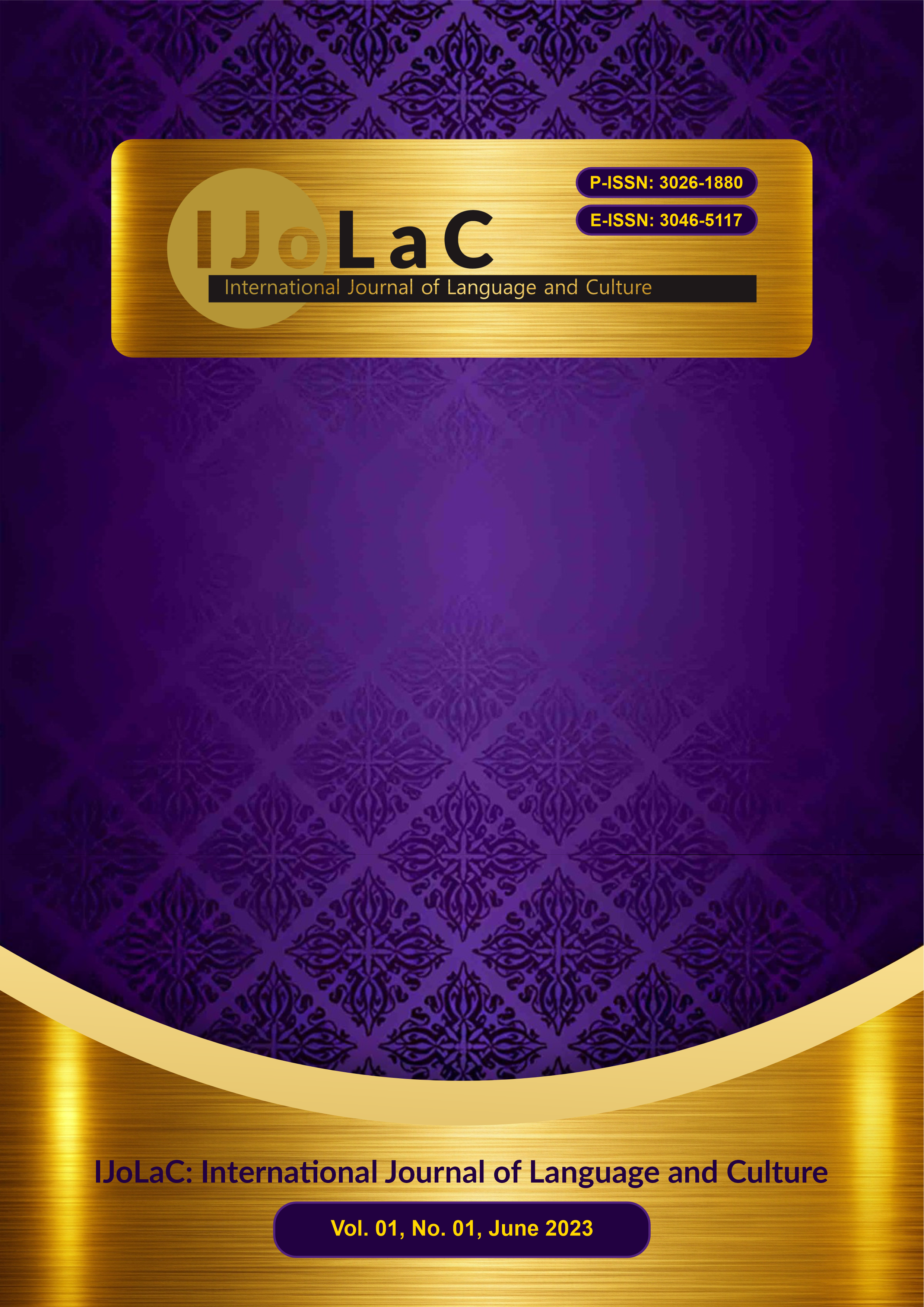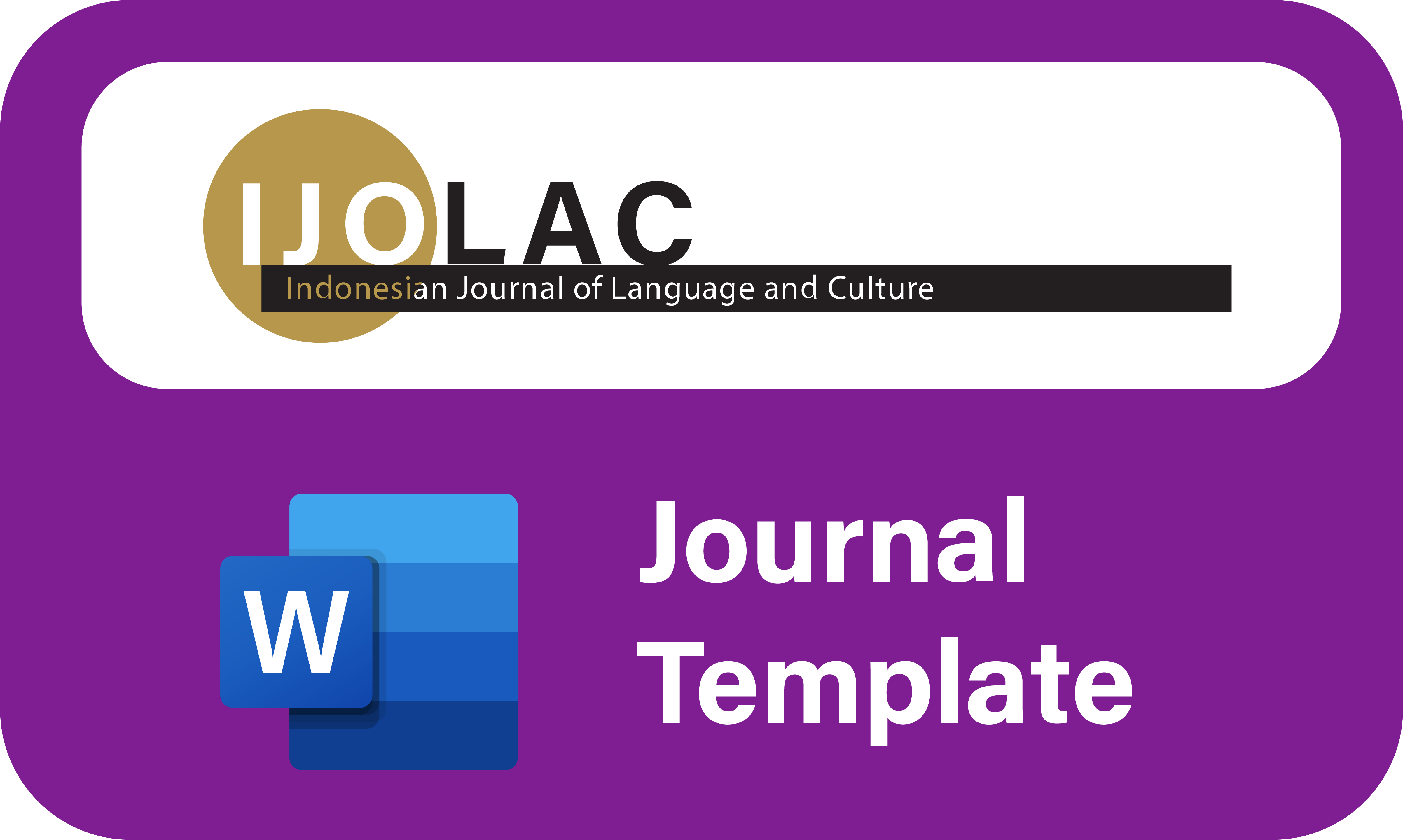EXPLORING THE CULTURAL PHILOSOPHY OF RED KEBAYA THROUGH SUNDANESE SONG LYRICS
Keywords:
Kebaya, Ancestral Wisdom, Cultural Philosophy, Color Symbolism, Idealization in Culture, Sundanese Song LyricAbstract
The kebaya, when analyzed through the lens of song lyrics, emerges not just as a garment but as enveloping the transmission of ancestral wisdom, embodying a cultural philosophy that has the potential to enrich and guide contemporary lives. This research endeavors to bridge this knowledge gap by unraveling its philosophical values embedded in Sundanese song lyrics. The research is rooted in the philosophy of science, rationalism, empiricism, and scientific methods. The research uncovers a complex interplay of positive and negative values, symbolic meanings, and cultural contexts. The analysis underscores the interconnectedness of color symbolism, historical context, and cultural expressions in shaping the philosophical values associated with traditional attire in song lyrics. In contrast, the analysis uncovered a negative correlation between the red kebaya and depicted wounds or heartache in the song lyrics. The analysis highlights the importance of considering attire as symbolic elements within cultural expressions, moving beyond idealizations to embrace the complexities and realities of romantic experiences.
Keywords: Sundanese Song Lyric; Kebaya; Ancestral Wisdom; Cultural Philosophy, Color Symbolism, Idealization in Culture.
Downloads
References
Abdullah, I. (2010). Konstruksi dan Reproduksi Kebudayaan. Yogyakarta: Pustaka Pelajar. Brier, B. M., & Hobbs, H. (2008). Daily life of the ancient Egyptians. Bloomsbury Publishing USA.
Byrne, A., & Hilbert, D. R. (Eds.). (1997). Readings on Color: The philosophy of color (Vol. 1). MIT Press.
Gronberg, T. (2016). Sonia Delaunay: Fashioning the Modern Woman, Women: A Cultural Review. Routledge: Taylor & Francis Ltd, Tandf Journal. XIII. 272–288. https://doi.org/10.1080/0957404022000026423.
Hamabata, M. M. (1991). Crested kimono: Power and love in the Japanese business family. Cornell University Press.
Hardi, R. S. and Zuchdi, D. (2020). Landasan Filosofis Buku Dunia Kata Karya M. Fauzil Adhim. Jurnal Ilmiah Telaah, 5(1), 14-25.
Helmi, M. and Rahmaniah, S. (2020). Pandangan Filosofis dan Teologis Tentang Hakikat Ilmu Pegetahuan sebagai Landasan Pendidikan Islam. Tarbiyah Islamiyah, 10(2), 33-51.
Hendrayana, D. (2017). Dina Kawih Aya Tembang. Bandung: Geger Sunten.
Isnéndés, C. R. (2015). Éstétika Sunda: Mertanyakeun Warna Busana Tradisional Sunda. [Online]. Diakses ti https://chyeretty. wordpress.com/esai-budaya-sastra- sunda/estetika-sunda-mertanyakeun-warna-busana-tradisional-sunda/. Accessed 23 March 2023.
Isnendes, R. (2021, April). Terms of Kinship in the Sundanese Society. In Thirteenth Conference on Applied Linguistics (CONAPLIN 2020) (pp. 460-465). Atlantis Press.
Karja, I. W. (2021, November). Makna warna. In Prosiding Seminar Bali-Dwipantara Waskita (Vol. 1, No. 1).
Kim, H., Sefcik, J. S., & Bradway, C. (2017). Characteristics of qualitative descriptive studies: A systematic review. Research in nursing & health, 40(1), 23–42.
Lambert, V. A., & Lambert, C. E. (2012). Qualitative descriptive research: An acceptable design. Pacific Rim international journal of nursing research, 16(4), 255-256.
Nagata, T., & Sunarya, Y. Y. (2023). Perkembangan kebaya kontemporer sebagai transformasi budaya. Jurnal Seni dan Reka Rancang: Jurnal Ilmiah Magister Desain, 5(2), 239-254.
Nayiroh, L. (2020). Strategi Komunikasi Pemerintah Daerah dalam Upaya Pelestarian Budaya Sunda pada Kepemimpinan Dedi Mulyadi di Kabupaten Purwakarta. Jurnal PIKMA: Publikasi Ilmu Komunikasi Media Dan Cinema, 3(1), 14-20.
Pastoureau, M. (2023). Blue: The history of a color. Princeton University Press.
Rahman, A. A., Sarbini, S., Tarsono, T., Fitriah, E. A., & Mulyana, A. (2018). Studi eksploratif mengenai karakteristik dan faktor pembentuk identitas etnik sunda. Jurnal Psikologi Islam dan Budaya, 1(1), 1-8.
Rewita, S. and Salminawati. (2022). Konsep dan Karakteristik Filsafat. Journal of Social Research, 1(3), 755-761.
Rodriguez, S., Stephens, R., & Arena, S. (1991). Interviewing subject-matter experts: Strategies for instructional-design success. Educational Technology, 31(12), 27-32.
Russanti, I., & Ds, M. (2019). Desain Kebaya Sunda. Pantera Publishing. Russanti, I., (2019). Desain Kebaya Sunda. Pantera Publishing.
Sengkey, A. A. (2023). Persepsi remaja terhadap busana daerah minahasa yang dimodifikasi sebagai upaya melestarikan budaya. Gearbox: Jurnal Pendidikan Teknik Mesin, 4(1), 151- 160.
Situmeang, I. R. V. O. (2021). Hakikat Filsafat Ilmu dan Pendidikan dalam Kajian Filsafat Ilmu Pengetahuan. Jurnal IKRA-ITH Humaniora, 5(1), 76-92.
Srihilmawati, R. (2023). Nilai filosofis kebaya dalam lirik lagu sunda. SISTEMA: Jurnal Penelitian Pendidikan, Bahasa, Sastra, dan Budaya, 1(1).
Sudaryat, Y. (2016). Wawasan Kesundaan. Bandung: Jurusan Pendidikan Bahasa Daerah; Fakultas Pendidikan Bahasa dan Sastra; Universitas Pendidikan Indonesia.
Umera-Okeke, N. (2016). Immediate Constituents and Syntactical Constructions in the English Language. Awka Journal of English Language and Literary Studies, 3(1), 83-94.
Yulianto, E., Prabawanto, S., Sabandar, J., & Wahyudin, W. (2019). Pola matematis dan sejarah batik sukapura: Sebuah kajian semiotika. JP3M (Jurnal Penelitian Pendidikan dan Pengajaran Matematika), 5(1), 15-30.
Zamroni, M. (2022). Filsafat Komunikasi: Pengantar Ontologis, Epistemologis, dan Aksiologis. IRCiSoD.
Zharandont, P. (2015). Pengaruh warna bagi suatu produk dan psikologis manusia. Bandung. Universitas Telkom.
Downloads
Published
How to Cite
Issue
Section
License
Copyright (c) 2023 IJoLaC: International Journal of Language and Culture

This work is licensed under a Creative Commons Attribution-ShareAlike 4.0 International License.



